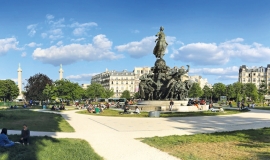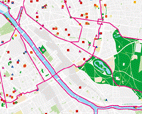
Within the framework of partnership work programs and following on from studies on young people, mobility, developing activities , new uses and approaches to public space, Apur has been looking at the future of sports activities in Parisian public spaces.
The growing number of “free” (non-club) activities and the increasing use of public spaces by people doing sports poses the question of the conditions for carrying out these activities in order to make sport more present, more accessible, and to develop it into a vector for social interaction available to everyone.
2 lines of action have been developed to address these challenges :
- The creation of a network of sports areas and itineraries linking up recreational facilities and green spaces to each other;
- The reinforcement of the sports on offer by providing free access to sports facilities within 5 minutes walking distance in the whole of the Parisian territory.
The network of sports areas and itineraries studied is based on iconic sites such as the Seine embankments, the canals and the green belt area around Paris. It is completed by a network of roads with wide pavements and/or central reservations. These areas and itineraries, which should be clearly indicated with signs (landmarks and information), would create the framework for multi-functional furniture (apparatus and urban furniture) and drinking-water fountains installed in the “activity zones”, ensuring the maintenance of a free, multi-functional public spaces.
In addition to this main network, a large number of spaces could be exploited to develop local sports areas and itineraries. Such is the case for large and small squares, stairways, open spaces, under bridges and other large structures as well as gables, in recessed alignments, on steep roads and controlled traffic roads (meeting areas and pedestrian zones).
Although it is true there has been an increase in open air facilities, current analysis of these services in the region reveal some inequalities both during daytime hours and 24/24h. Several options have been studied to provide free sports facilities within 5 minutes walking distance in the whole of the Parisian area by 2020.

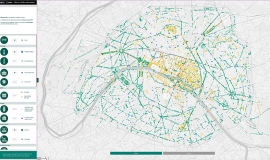
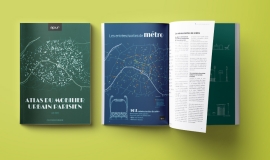
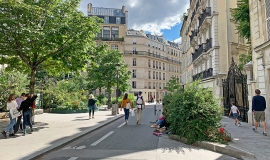
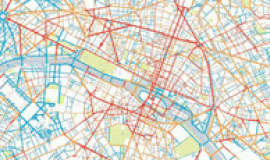

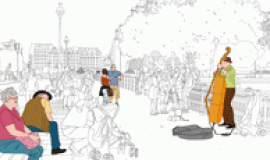
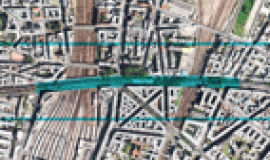
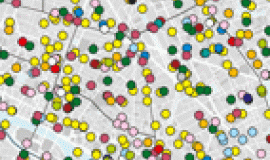
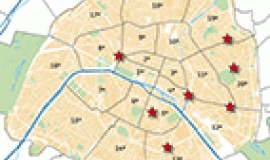
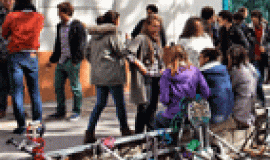

![Aerial view of the Seine © ph.guignard[at]air-images.net étude - têtière actu - Paris, rives de la Seine - Le projet des berges de Seine](https://www.apur.org/sites/default/files/styles/270_160/public/images/publication/a-la-une/APBROAPU561_actu.gif?itok=ZICrfwEn)
